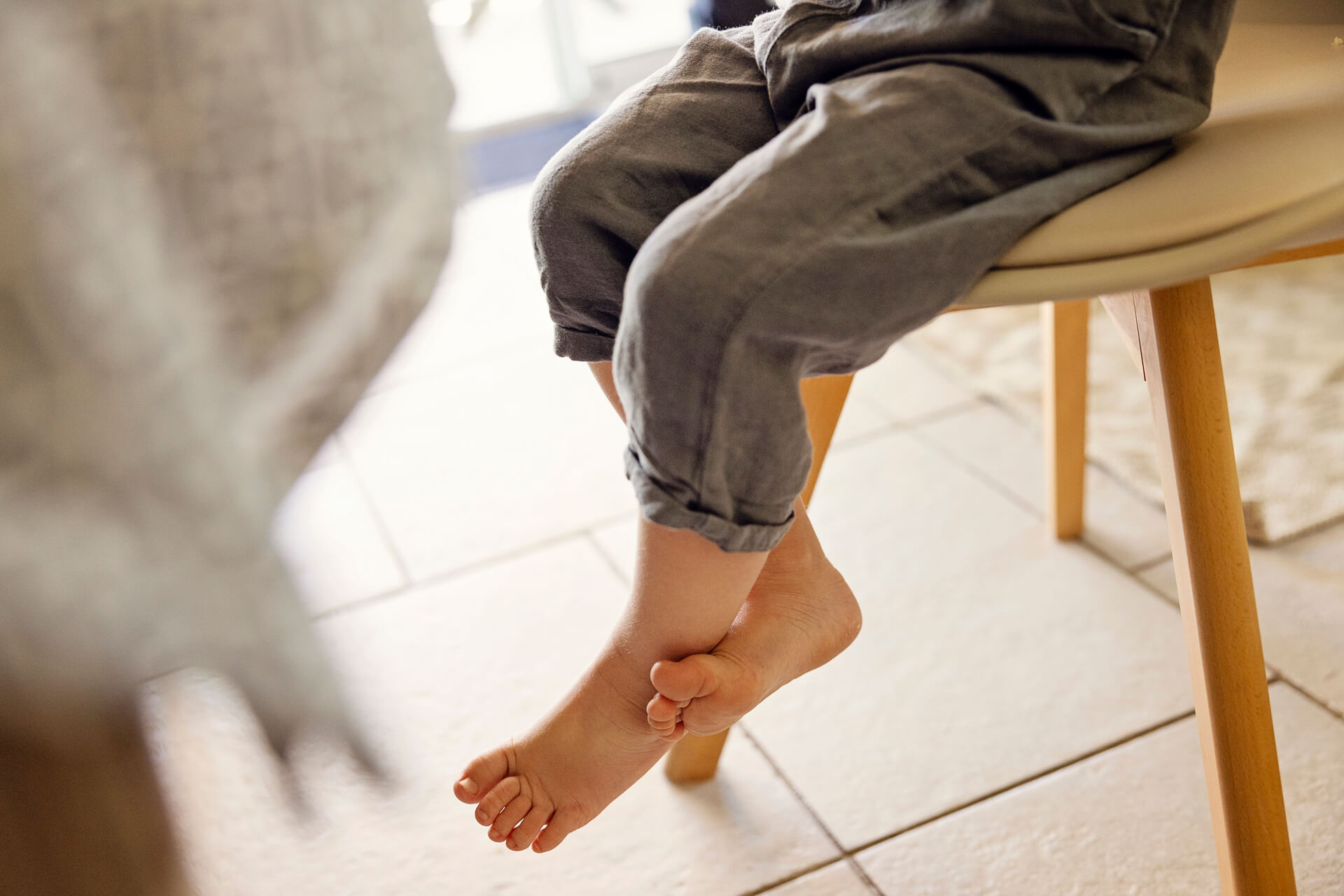As kids, we go out, we play and we get a few knocks and bruises every now and again.
We’d graze our elbows, get a cork every now and then and have bruises all over.
We never really got bothered by them because it was all part and parcel of running around and playing with your mates.
Some of us might also remember that when we were younger, we used to get this annoying knee pain right on the top of your shin just below your knee cap, that just kept coming back every time we played outside and never really went away (I certainly do!).
For some of us, it was nothing more than a little annoyance.
But for others, it posed a bigger problem because it wasn’t just painful, it stopped us from playing sport or doing anything fun to a significant degree.
We all may not remember the day it went away but it certainly did, and it hasn’t come back since.
If you experienced this or know someone who is, you may have had something called Osgood-Schlatter disease (OSD).
So, what is that and why did do some get it but not others?
First off, it’s not really a disease but more of an overuse injury that usually occurs in very active adolescents during their growth spurts, peaking in boys at about 12 to 15 years and girls at about 10 to 12 years.
This is the time where their bones, tendons and muscles all grow at different rates1.
There are many growth plates located throughout our bodies, and these areas are relatively softer than the rest of our bones to allow them to grow.
Two of these are located at the knee joint – one at the bottom of the thigh bone and the other at the top of the shin bone near the tibial tuberosity.
As we grow, the tendon that connects the knee cap to the tibial tuberosity pulls on the relatively softer growth plate.
With activities that load the knee joint like running, jumping and going up stairs or hills, the top of the shin bone is constantly being pulled on, leading to swelling and irritation around the growth plate – resulting in the pain of OSD.
When it comes to treatment, as there is a lack of evidence-based interventions, passive and/or wait-and-see approaches are often prescribed2.
While this is recommended initially to allow symptoms to settle, it’s not really a viable option in the long term.
It was also found that those with OSD have lower quadricep muscle strength compared to their pain-free peers2.
Therefore, an active approach through activity modification and progressive strengthening appears to be a better2.
For example, it’s ok for your child to keep running if he/she feels a little pain while doing so.
However, if it causes him/her to limp, your child should stop and rest it and try the activity again when the pain is better.
OSD is a self-limiting syndrome where symptoms may linger for 12 – 18 months2.
Even though it has an excellent prognosis in majority of cases that are managed conservatively, that doesn’t negate the importance of exercise to manage the condition.
With all this in mind OSD can require a variety of treatment approaches.
A physiotherapist is ideally placed to make an accurate assessment and then prescribe the best treatment, whether it be relative rest, structured exercise, graduated exercise or a combination of them all.
References
- Weiler R, Ingram M, Wolman R. Osgood-Schlatter disease. Bmj. 2011 Aug 1;343:d4534.
- Rathleff MS, Winiarski L, Krommes K, Graven-Nielsen T, Hölmich P, Olesen JL, Holden S, Thorborg K. Activity Modification and Knee Strengthening for Osgood-Schlatter Disease: A Prospective Cohort Study. Orthopaedic Journal of Sports Medicine. 2020 Apr 6;8(4):2325967120911106.
- Ross MD, Villard D. Disability level of college-aged men with a history of Osgood-Schlatter disease. Journal of Strength and Conditioning Research. 2003; 17(4): 659 – 663.
- Gholve PA, Scher DM, Khakharia S, Widmann RF, Green DW. Osgood schlatter syndrome. Current opinion in pediatrics. 2007 Feb 1;19(1):44-50.

